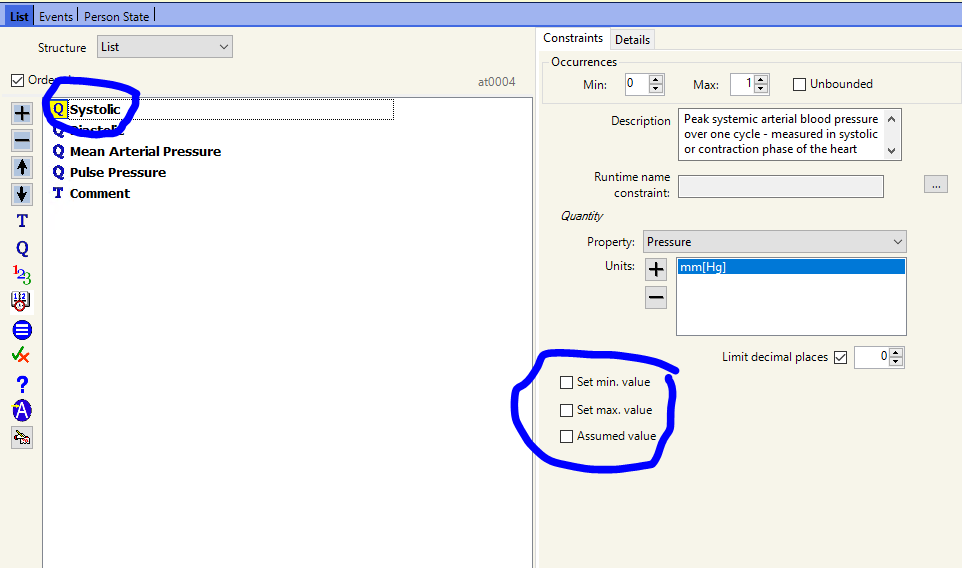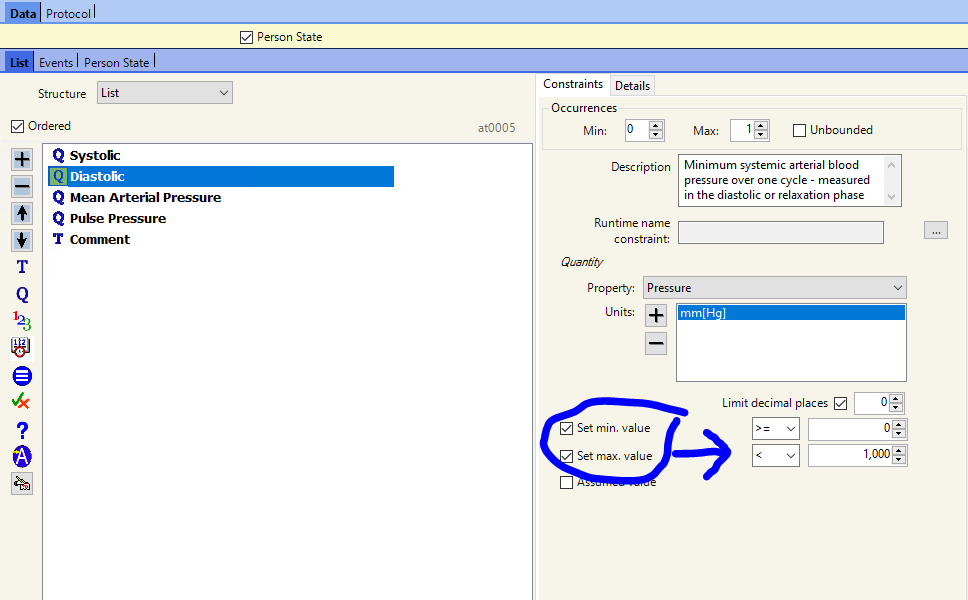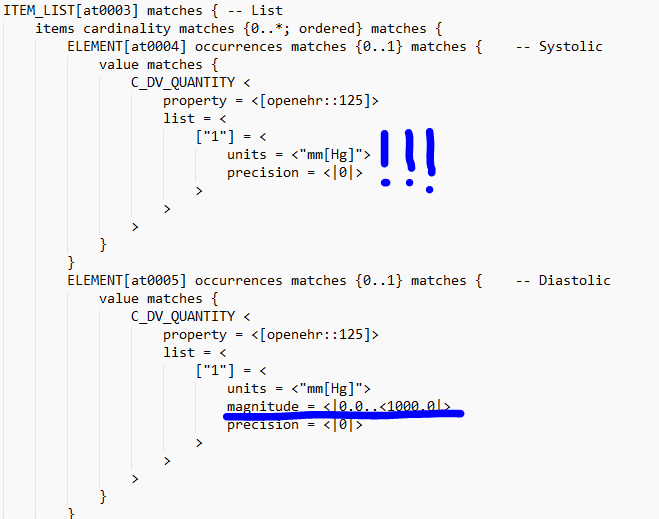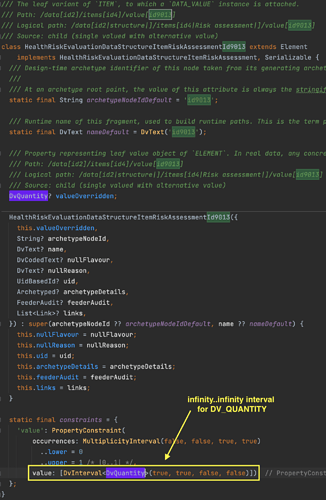In “openEHR-EHR-EVALUATION.health_risk.v1.1.7.opt2” there is a DV_QUANTITY constraint without “magnitude” attribute which is a mandatory attribute for DV_QUANTITY:
ELEMENT[id4] occurrences matches {0..1} matches { -- Risk assessment
value matches {
DV_TEXT[id9011] occurrences matches {0..1}
DV_PROPORTION[id9012] occurrences matches {0..1}
DV_QUANTITY[id9013] occurrences matches {0..1} matches {
property matches {[at9001]} -- Qualified real
units matches {"1"}
}
}
}
Other templates with a missing “magnitude”:
“openEHR-EHR-OBSERVATION.energiebehoefte_eiwitbehoefte_volwassenen.v1.0.0.adls”:
- ELEMENT[id85] occurrences matches {1} matches { – BMI
- ELEMENT[id44] occurrences matches {0…1} matches { – Gemeten VVM
- ELEMENT[id71] occurrences matches {0…1} matches { – Eiwitbehoefte
- ELEMENT[id75] occurrences matches {0…1} matches { – Eiwitbehoefte
- ELEMENT[id79] occurrences matches {0…1} matches { – Eiwitbehoefte
“openEHR-EHR-OBSERVATION.loopbandtest.v1.0.0.adls”:
- ELEMENT[id6] occurrences matches {0…1} matches { – Functionele loopafstand in meters:
- ELEMENT[id8] occurrences matches {1} matches { – Maximale loopafstand in meters:
“openEHR-EHR-OBSERVATION.lysholmscore_gemodificeerde_versie.v1.0.0.adls”:
- ELEMENT[id66] occurrences matches {0…1} matches { – Totaalscore
“openEHR-EHR-OBSERVATION.neck_disability_index_ndi.v1.0.0.adls”:
- ELEMENT[id97] occurrences matches {0…1} matches { – Totaalscore
“openEHR-EHR-OBSERVATION.verkorte_checklist_veilige_zorg.v1.0.0.adls”:
- ELEMENT[id21] occurrences matches {0…1} matches { – Totaalscore Ondervoeding
- ELEMENT[id36] occurrences matches {0…1} matches { – Totaalscore huidletsel
- ELEMENT[id51] occurrences matches {0…1} matches { – Totaalscore incontinentie
- ELEMENT[id66] occurrences matches {0…1} matches { – Totaalscore Medicatiefouten
- ELEMENT[id83] occurrences matches {0…1} matches { – Totaalscore Vallen
- ELEMENT[id98] occurrences matches {0…1} matches { – Totaalscore Depressie
- ELEMENT[id115] occurrences matches {0…1} matches { – Totaalscore Mondproblemen
- ELEMENT[id130] occurrences matches {0…1} matches { – Totaalscore Delier
- ELEMENT[id142] occurrences matches {0…1} matches { – Totaalscore Oogproblemen
- ELEMENT[id155] occurrences matches {0…1} matches { – Totaalscore Oorproblemen
- ELEMENT[id168] occurrences matches {0…1} matches { – Totaalscore Pijn
- ELEMENT[id179] occurrences matches {0…1} matches { – Totaalscore Eenzaamheid
Empty “magnitude”
In “openEHR-EHR-OBSERVATION.meet_en_weet_stuurgroep_ondervoeding.v1.0.0.adls” there is an empty “magnitude” attribute without a C_REAL constraint:
ELEMENT[id230] occurrences matches {0..1} matches { -- Totaal vocht
value matches {
DV_QUANTITY[id231] matches {
magnitude
units matches {"ml"}
precision matches {0}
}
}
}
CADL2 grammar allows such an attribute but what does it mean if there is no C_OBJECT for “magnitude”? It should be a C_REAL.
The “magnitude” attribute constraint is still not specified as required by the DV_QUANTITY.
How should this be handled? Is there an implicit default “magnitude” like magnitude matches {|>=0.0|}?
Can a CKM warn clinical modelers about the missing mandatory attributes?






